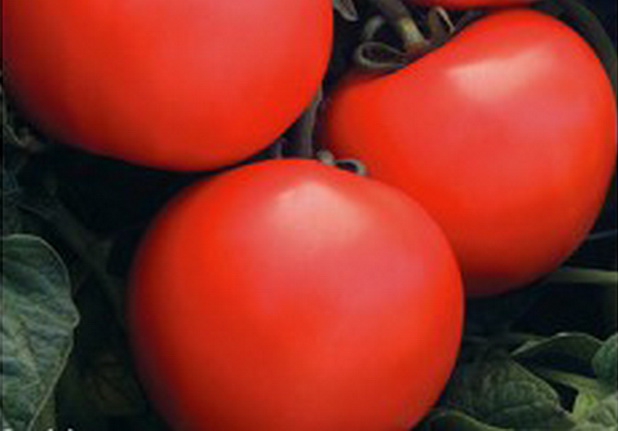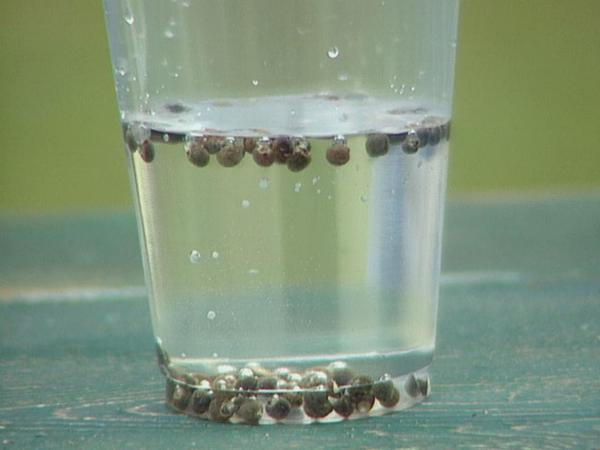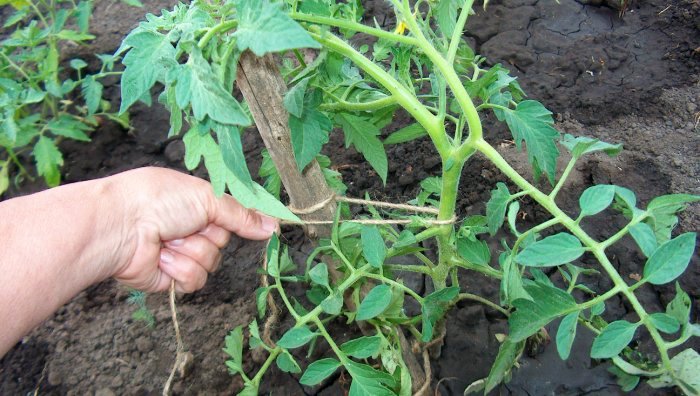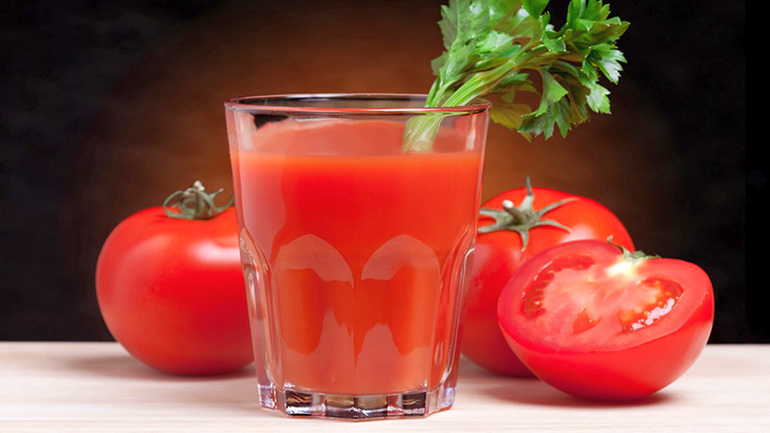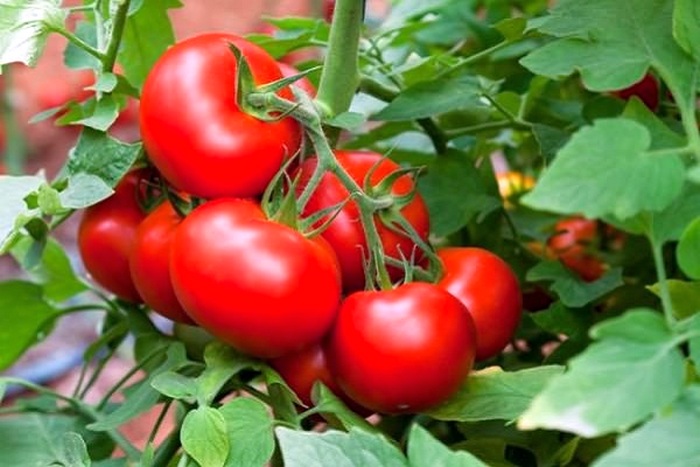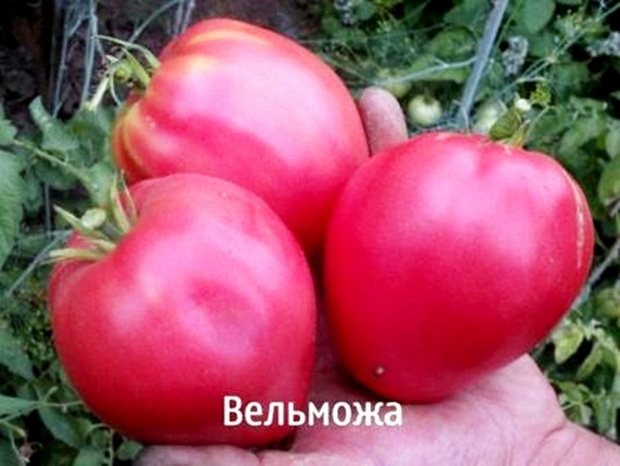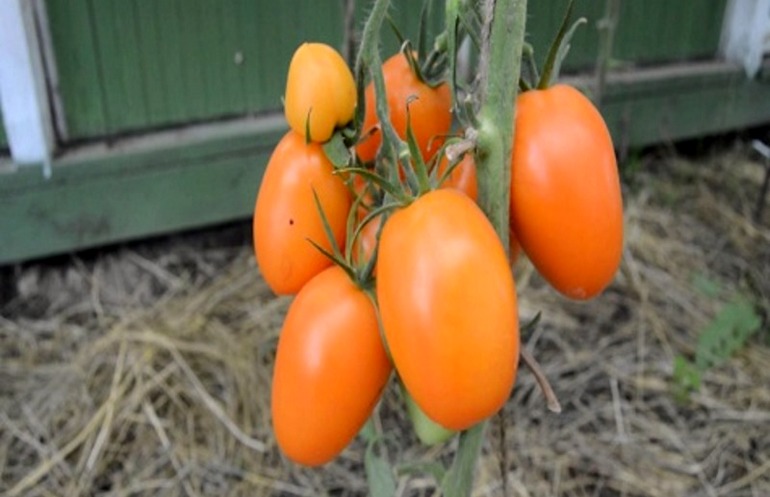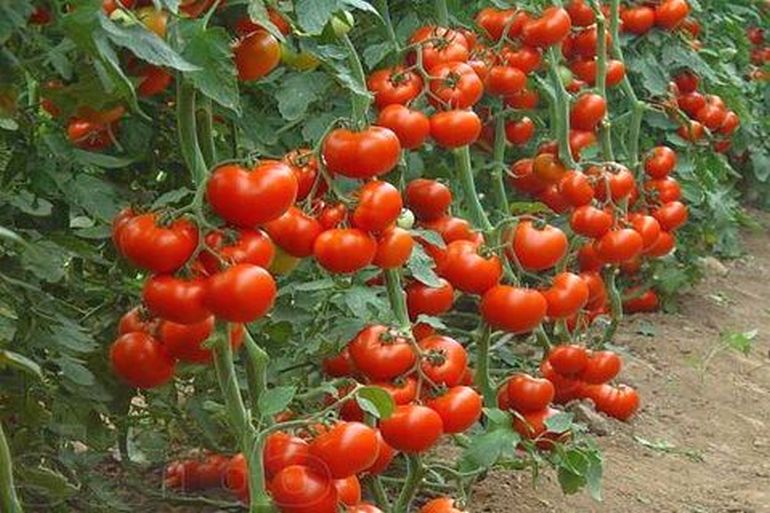Content:
Tomato is a vegetable crop of the Solanaceae family. It is a single or perennial herb. The stem of a tomato is erect or lodging, strongly branching, has a height of 0.3 to 2.0 m, covered with odd-pinnate leaves with large lobes. Small yellow flowers are collected in racemose inflorescences.
The fruit is a multi-nested large juicy berry weighing from 30-50 to 100 grams or more. The shape of the fruit can be either classic round or elongated, cylindrical. Coloring - dark red, pink, crimson, light pink, yellow, golden.
Among the variety of varieties of this culture, an ultra-early hybrid, the Debut F1 tomato, is very popular among summer residents. Bred by the Dutch breeders of the MONSANTO company, it passed a successful variety trial and was included in the State Register of Breeding Achievements in 2008. During its cultivation in greenhouses, in personal and summer cottages, the variety has established itself from the best side. More details about the characteristics and description of the tomato variety Debut will be discussed in this article.
Description and features
Botanical Description of Tomato Debut:
- The bush is compact, medium-sized, no more than 70-80 cm high;
- Leaves are of medium size, thin, green in color with a slightly corrugated surface;
- The root system is pivotal, well branched. The bulk of the roots is located in the fertile soil layer;
- Inflorescences - a raceme consisting of medium-sized yellow flowers;
- Fruits are large, round, deep red in color, with thick walls and high density of pulp. The average weight of the fruit is 200-220 g. When grown in greenhouses and hotbeds, fruits can reach a weight of 300 g.
Variety characteristics
- Early maturity - this variety is ultra-early in terms of ripening. From emergence to the first harvest, 57-60 days pass;
- Flowering - the cultivar is an optional self-pollinator. This means that under favorable conditions, due to the structure of the flower, its pollination can occur not only with the help of insects (bees, bumblebees), but also without their participation in a way (self-pollination);
- Frost resistance - the variety belongs to frost-resistant. Plants planted in open ground and exposed to frost are severely damaged or even die;
- Productivity - with proper care, the productivity of this variety averages 9-10 kg / m2;
- Disease and pest resistance - the hybrid is highly resistant to tomato diseases such as alternaria stem cancer, mosaic, fusarium wilt, gray leaf spot, verticillium wilt;
- Transportability - due to the thick walls and high density, the fruits have good transportability;
- Usage - The F1 debut is a table variety. It is used for preparing salads, as well as for fresh consumption. Not suitable for conservation.
Agrotechnics
The cultivation of this variety consists of forcing seedlings, transplanting them into open ground, further planting care, consisting of loosening the soil, removing weeds, pinching.
Growing seedlings
Seeds purchased at the store should be pre-sowed, consisting of such techniques as:
- Verification of germination - for this, several seeds are selected from a batch of seeds (packs), placed in a gauze bag and soaked for a day.After that, the seed bag is placed in a warm place for 7 days. At the end of this period, the gauze is unfolded and the number of seeds sprouted is calculated: if there are more than half of the germinated seeds, then the batch can be used for sowing;
- Calibration - for this, the seeds are placed for 20 minutes in a 3% sodium chloride solution (1/2 teaspoon per 500 ml of water). As a result of this procedure, the puny seeds will float to the surface, while the heavy ones will settle to the bottom. The seeds selected in this way are washed under running clean water to wash off the salt residues from their surface, and laid out on newsprint to dry;
- Disinfection - to destroy the infection on the surface of the seeds, they are wrapped in gauze and kept in a 1% solution of potassium permanganate (1 g of salt per 100 ml of water) for 20 minutes. After that, the seeds are washed and dried;
- Treatment with biologically active substances - to accelerate germination, increase seedling resistance to black leg, seeds are treated with such bioactivators as aloe extract, Epin, Zircon;
- Bubbling - the seeds are placed in a gauze bag and immersed in a vessel in which the hose from the aquarium compressor is placed. When the compressor is running, the water and seeds in the tank are enriched with oxygen. Thanks to this method of preparing the seed, its germination increases;
- Soaking (germination) - viable seeds are germinated immediately before sowing. To do this, a cotton pad is moistened with water, the seeds are laid out on its surface, after which it is covered with a second wet disk on top. Such an "incubator" is placed in a small container for 2-3 days.
The substrate for sowing seeds is prepared from 1 part of sod land, 1 part of humus, 1 part of low-lying peat, 1/5 of river sand and a glass of wood ash. All these components are carefully poured into the seedling box, mixed thoroughly. 2 days before sowing, the substrate is watered with a 1% solution of potassium permanganate, the day before sowing, it is treated with a fungicide against the black leg. On the day of sowing, the substrate is thoroughly mixed, if necessary, moistened.
Seeds are sown into grooves 1 cm deep, spreading them in increments of 1-1.5 cm.The distance between two grooves during sowing should be 7-10 cm.
After sowing, the box is covered with a film or other covering material and placed in a warm and dark place with a constant temperature of at least + 200C. When, after 3-5 days, shoots appear, the seedling box is placed on a sunny window.
After the plants have 4-5 true leaves, they dive into other seedling boxes.
Planting seedlings in open ground and greenhouses
For planting grown seedlings, areas with light and fertile slightly acidic soil are chosen well-lit by the sun. The groundwater level should be no closer than 50-60 cm from the surface. Seedlings are planted in open ground in late May, in greenhouses in late April - early May.
Seedling planting scheme - 50 × 50 cm.
After planting in open ground, the seedlings are abundantly watered and covered with film or glass jars.
Care
Watering
It is known that tomatoes do not like excess moisture, therefore, for proper watering, they adhere to the following points:
- Before flowering - once a week;
- When the first ovaries appear, the tomatoes are watered more often (2-3 times a week);
- To prevent the soil from drying out in dry and hot weather, plants are also watered often and abundantly.
For irrigation, use pre-settled, warm water (not lower than 12 ° C). The best time to water is late in the evening.
Loosening the soil
To provide oxygen to the roots of the plant, the soil is loosened after each watering. At the beginning of planting, the soil near the tomatoes is loosened deep enough (by 10-15) cm.After a couple of weeks, so as not to damage the already formed root system, the soil near the plants is loosened by only 5-8 cm.Loosening is often combined with conventional weeding.
Top dressing
Since the Debut belongs to the ultra-early varieties, it does not need additional fertilizing during a short growing season. Nitrogen fertilizers applied at this time can lead to abundant growth of vegetative mass and delay in fruit ripening.
Tying
You should start tying the plants at the end of flowering, so that when fruits appear and pour, the stems do not break under their weight. Tomatoes are tied to a trellis or a stake driven into the ground next to the plant, up to 1 m high, using a linen thread, long strips of cotton fabric.
Stepping
So that the root does not waste its energy on extra shoots, they must be removed, i.e. pinch. In appearance, the stepson differs from the fruit stem. It begins to grow from the leaf axils, and the fruit branch from the stem. It is necessary to graze tomatoes, otherwise the fruits will be small. And dense bushes will become a haven for various pests, fungal diseases. Stepson, breaking out unnecessary shoots at their base, manually.
Harvesting
Tomatoes of this variety are harvested when the fruits acquire a uniform rich red color. Cleaning is done in dry, not hot weather. The removed tomatoes are inspected for damage and damage. This allows you to avoid the development of rot and spoilage during storage.
Advantages and disadvantages
Compared to other varieties, Debut tomatoes have the following advantages:
- Early ripening;
- High resistance to a number of diseases;
- High productivity;
- Good fruit transportability;
- Compact size of the bush;
The main disadvantage of this variety is the obligatory tying of the plants so that the ripening large fruits do not touch the soil surface.
Thus, Debut is a variety with high yield potential. You can implement it by following all the recommendations for growing it.
